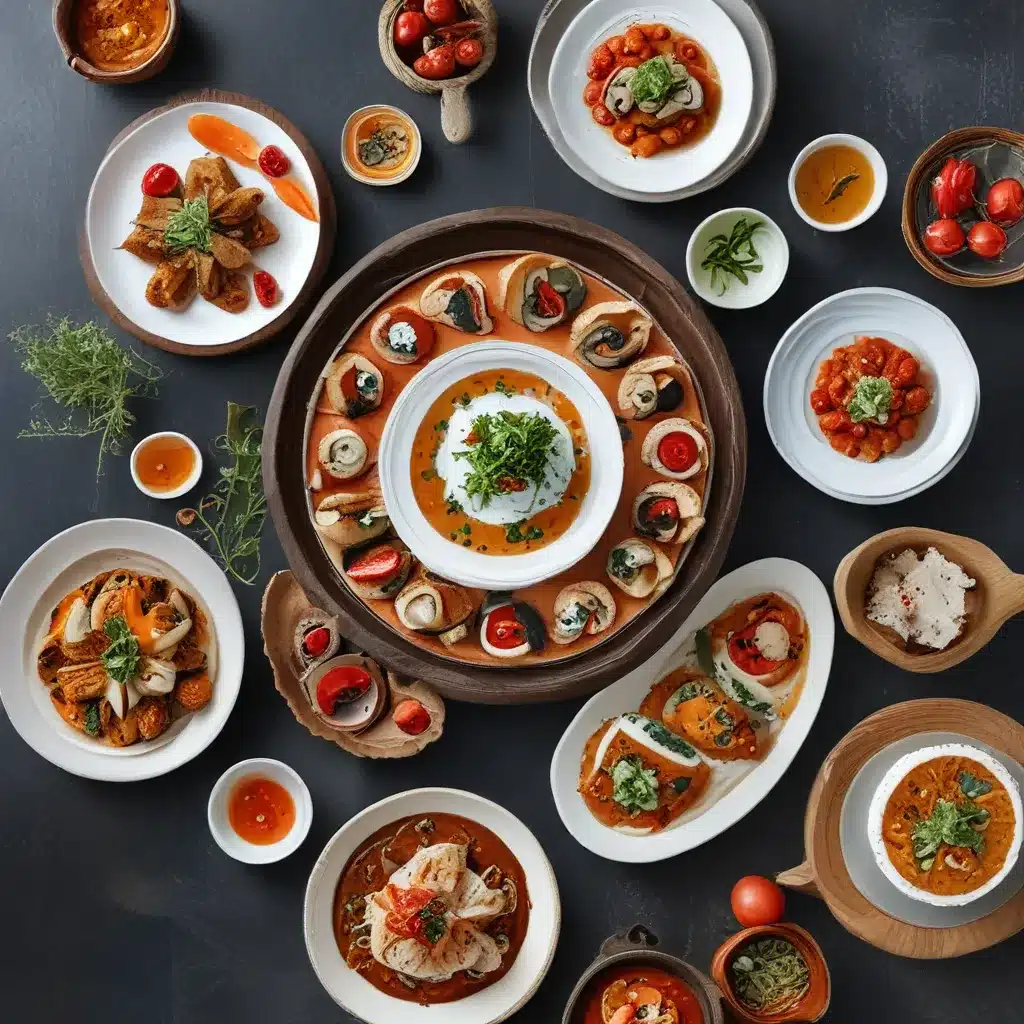
Morocco’s Culinary Journey to New York City
As I step into the heart of the Moroccan restaurant, the aroma of spices and simmering tagines instantly transports me to the vibrant streets of Marrakech. But this isn’t Marrakech – it’s New York City, where a fusion of traditional Moroccan flavors and modern culinary techniques is taking the city by storm.
At El Bahia, the city’s premier Moroccan eatery, I’m about to embark on a culinary adventure that blends the best of two worlds. The owner, Fatima, greets me with a warm smile and a gleam in her eye, eager to share the story behind her restaurant’s unique approach to traditional Moroccan dishes.
Bridging the Past and Present
“When I first came to New York, I knew I wanted to bring the flavors of my homeland to the city,” Fatima explains, gesturing to the ornate, yet inviting dining room. “But I also wanted to put my own modern spin on things, to show how Moroccan cuisine can be elevated and reimagined for a contemporary audience.”
As I settle into a plush, velvet-upholstered chair, I can’t help but notice the juxtaposition of old and new that permeates the space. The walls are adorned with intricate, hand-painted tilework, a nod to the traditional architecture of Moroccan riads, while sleek, brass light fixtures and a stunning, abstract mural lend a decidedly modern edge.
Susie Novak, an interior designer who has mastered the art of blending modern and traditional elements, would undoubtedly approve of the seamless integration of styles at El Bahia. “It’s all about finding that perfect balance,” she advises. “You want the space to feel timeless and fresh, not stuck in the past or overly trendy.”
Redefining Moroccan Classics
As I peruse the menu, I’m immediately drawn to the familiar dishes that have been reimagined with a contemporary twist. The traditional lamb tagine, for instance, is elevated with the addition of dried figs and a fragrant saffron broth, while the classic couscous is served with a vibrant, herb-infused vegetable medley that practically dances on the tongue.
“We honor the recipes that have been passed down for generations, but we’re not afraid to experiment and push the boundaries,” Fatima explains, her eyes alight with passion. “Our goal is to showcase the versatility and depth of Moroccan cuisine, to prove that it’s not just about tagines and mint tea.”
Susie Novak, whose own dining room renovation blends moody hues and modern details, would undoubtedly appreciate the artful balance that Fatima and her team have struck. “It’s all about creating a space that feels intentional and worthy of your time,” Novak notes. “And that same principle applies to the food – it should be a true sensory experience.”
Embracing the Unexpected
As I eagerly await my first course, I can’t help but wonder what other culinary surprises El Bahia has in store. And true to Fatima’s word, the menu is full of unexpected delights. The traditional beef and prune tagine, for instance, is reimagined as a show-stopping terrine, layered with tender meat, sweet prunes, and a vibrant pomegranate reduction.
“We wanted to take a classic dish and really showcase the unique flavors and textures in a new, visually stunning way,” Fatima explains, gesturing to the beautifully plated dish. “It’s all about challenging perceptions and pushing the boundaries of what people expect from Moroccan cuisine.”
As interior designer Emily Henderson has observed, the key to successfully blending modern and traditional elements is to embrace the unexpected. “It’s not about following a formula,” she notes. “It’s about taking risks, experimenting, and letting the space – or in this case, the food – speak for itself.”
A Culinary Kaleidoscope
As I savor each bite, I’m struck by the way the flavors and textures intertwine, creating a culinary kaleidoscope that delights the senses. The traditional lamb meatballs, for instance, are infused with a hint of cinnamon and served atop a silky, butternut squash purée, while the classic bastilla (a savory Moroccan pie) is reinvented as a flaky, phyllo-wrapped package filled with spiced chicken and a decadent almond-egg filling.
“We want our guests to be surprised and delighted at every turn,” Fatima shares, her eyes sparkling with pride. “It’s not just about feeding people – it’s about taking them on a journey, helping them discover new flavors and textures that they never knew they loved.”
As I savor the final bite of my meal, I can’t help but feel a sense of wonder and appreciation for the culinary artistry on display. Fatima and her team have not only honored the rich traditions of Moroccan cuisine but have elevated it to new heights, seamlessly blending the old and the new to create a dining experience that is truly unforgettable.
A Taste of Morocco, A Feast for the Senses
In a city that is constantly evolving, it’s refreshing to find a restaurant like El Bahia that celebrates the past while embracing the future. From the vibrant, modern decor to the expertly crafted, avant-garde dishes, every aspect of the dining experience is a testament to the power of innovation and the enduring allure of tradition.
As I reluctantly bid farewell to the cozy, yet sophisticated dining room, I can’t help but feel a deep sense of gratitude for the culinary journey I’ve just experienced. El Bahia has not only introduced me to the wonders of Moroccan cuisine but has also inspired me to approach my own cooking with a newfound sense of creativity and adventure.
So, if you’re ready to embark on a culinary odyssey that blends the best of the past and the present, make your way to El Bahia and prepare to be swept away by the magic of Traditional Dishes, Modern Style.


